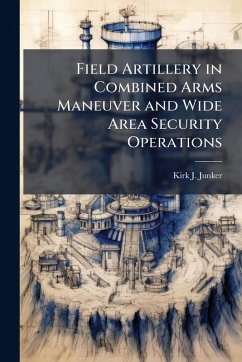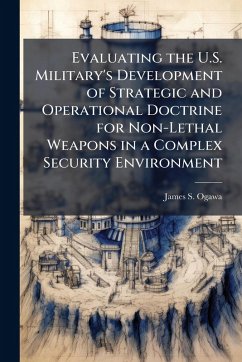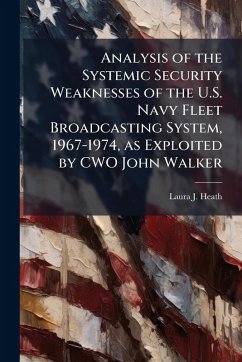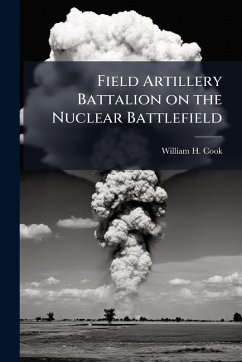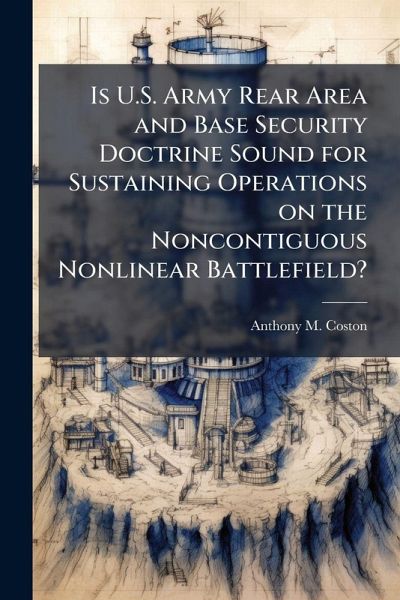
Is U.S. Army Rear Area and Base Security Doctrine Sound for Sustaining Operations on the Noncontiguous Nonlinear Battlefield?
Versandkostenfrei!
Versandfertig in über 4 Wochen
15,99 €
inkl. MwSt.
Weitere Ausgaben:

PAYBACK Punkte
8 °P sammeln!
This monograph reviews existing and emergent Joint and Army doctrine; assesses the current and emergent threats to sustainment operations based on the Contemporary Operating Environment (COE) and transformation to the Interim and Objective Force; and explores historical case studies of Russian nonlinear and noncontiguous operations in Afghanistan and Chechnya. The monograph analyzes these findings against the Training and Doctrine Command (TRADOC) Doctrinal Literature Programs'; characteristics of sound doctrine - effective, acceptable, well researched, enduring, flexible, comprehensible, cons...
This monograph reviews existing and emergent Joint and Army doctrine; assesses the current and emergent threats to sustainment operations based on the Contemporary Operating Environment (COE) and transformation to the Interim and Objective Force; and explores historical case studies of Russian nonlinear and noncontiguous operations in Afghanistan and Chechnya. The monograph analyzes these findings against the Training and Doctrine Command (TRADOC) Doctrinal Literature Programs'; characteristics of sound doctrine - effective, acceptable, well researched, enduring, flexible, comprehensible, consistent, and concise - to determine if U.S. Army rear area and base security doctrine is sound for sustaining operations on the noncontiguous nonlinear battlefield. The monograph recommends several changes to doctrine definitions, concepts, and capabilities. First, it recommends changing the doctrine definitions for threat levels and rear area concepts. These proposed definitions are based on the area utility, hazard severity, and threat probability and assist commanders in prioritizing and allocating resources. Second, it recommends improvements to doctrine concepts including preemption and an operational level force protection doctrine to counter asymmetric threats. Finally, it recommends enabling support organizations with an organic, flexible force protection and preemptive capability. This work has been selected by scholars as being culturally important, and is part of the knowledge base of civilization as we know it. This work was reproduced from the original artifact, and remains as true to the original work as possible. Therefore, you will see the original copyright references, library stamps (as most of these works have been housed in our most important libraries around the world), and other notations in the work. This work is in the public domain in the United States of America, and possibly other nations. Within the United States, you may freely copy and distribute this work, as no entity (individual or corporate) has a copyright on the body of the work. As a reproduction of a historical artifact, this work may contain missing or blurred pages, poor pictures, errant marks, etc. Scholars believe, and we concur, that this work is important enough to be preserved, reproduced, and made generally available to the public. We appreciate your support of the preservation process, and thank you for being an important part of keeping this knowledge alive and relevant.



